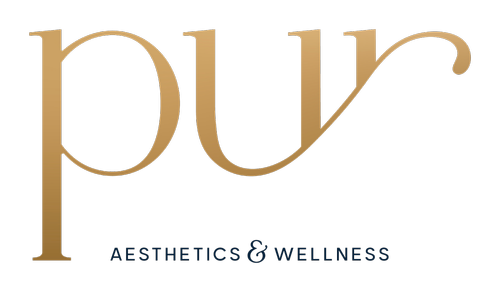Hair loss, a condition affecting both men and women, can have a profound impact on self-esteem and overall well-being. However, Platelet-Rich Plasma (PRP) therapy has emerged as a promising and increasingly popular treatment option to combat hair loss.
This non-invasive procedure harnesses the body’s natural healing abilities to stimulate hair growth and restore a fuller, healthier mane. As we dive into the world of PRP for hair loss in Granger, IN, it’s evident that this innovative therapy lies in its potential to revitalize one’s locks and boost confidence, offering new hope to those struggling with hair loss-related challenges.
1. What Type of Hair Loss Do I Have?
Hair loss appears in various forms, including male pattern baldness, female pattern hair loss, and conditions like alopecia areata. Each type presents unique characteristics and patterns of hair thinning or loss, necessitating tailored approaches to treatment.
Hair loss can be attributed to a variety of factors, ranging from genetics and hormonal imbalances to stress, poor nutrition, and certain medical conditions. Recognizing the common causes and risk factors associated with hair loss is essential for both prevention and treatment strategies, shedding light on the underlying triggers of this widespread concern.
Beyond the physical aspect, hair loss can have a profound impact on an individual’s self-esteem and mental well-being. It often leads to feelings of self-consciousness, anxiety, and even depression. Understanding the emotional toll of hair loss underscores the importance of effective treatments like PRP therapy, which not only target the physical aspects but also contribute to restoring confidence and overall quality of life.
2. What is PRP Therapy For Hair Loss?
Platelet-Rich Plasma (PRP) is a cutting-edge medical technique that harnesses the regenerative power of a patient’s own blood. It involves extracting a small amount of blood, typically from the patient’s arm, and then processing it to concentrate the platelets. These platelets are rich in growth factors and other bioactive proteins, making PRP a potent healing substance.
PRP therapy for hair loss works by injecting the concentrated PRP directly into the scalp at the areas experiencing hair thinning or loss. The growth factors in PRP stimulate the dormant hair follicles, encouraging them to enter a growth phase. This, in turn, leads to increased hair density and thickness over time. Additionally, PRP can improve blood circulation to the scalp, nourishing the follicles and promoting a healthier hair growth environment.
PRP therapy offers several compelling benefits for individuals seeking hair restoration.
-
It’s a minimally invasive procedure, requiring no incisions or surgery. This means shorter recovery times and minimal discomfort.
-
PRP utilizes the patient’s own blood, reducing the risk of allergic reactions or adverse side effects.
-
PRP has shown promising results in clinical studies, with many patients reporting significant improvements in hair volume and quality.
-
As a non-surgical option, PRP therapy aligns with the desire for natural-looking results and offers a potential boost in self-confidence for those grappling with hair loss.
3. The PRP Procedure for Hair Loss in Granger, IN
PRP therapy for hair loss in Granger, IN follows a well-defined process.
-
Initially, a small sample of the patient’s blood is drawn, typically from their arm, and placed in a centrifuge to separate the platelet-rich plasma from other blood components.
-
Once concentrated, this PRP is prepared for injection.
-
The treatment area on the scalp is cleaned, and the PRP solution is strategically injected into specific regions with thinning hair or hair loss.
The entire procedure is generally quick and minimally invasive, often completed in under an hour.
Pre-Treatment Consultation and Evaluation
Before undergoing PRP therapy in Granger, IN, you should schedule a pre-treatment consultation. During this appointment, the practitioner will conduct a comprehensive evaluation of the patient’s scalp and hair loss pattern.
They will also review the patient’s medical history and discuss expectations and potential outcomes. This consultation is an opportunity for patients to ask questions, clarify any concerns, and ensure that PRP therapy is the appropriate course of action for their specific hair loss condition.
Following a thorough evaluation, the provider will create a customized treatment plan tailored to the individual’s needs, ensuring a personalized approach to hair restoration.
4. Maintenance and Follow-Up to PRP Hair Loss Treatment
After your initial hair restoration treatment, it’s essential to focus on maintenance and follow-up to ensure the longevity and health of your new hair. In this section, we’ll discuss the need for follow-up treatments, post-treatment care, and the lifestyle and dietary considerations that contribute to maintaining healthy hair.
The Need for Follow-Up Treatments
While the results of your hair restoration treatment are undoubtedly exciting, it’s important to recognize that hair growth is an ongoing process that may require follow-up treatments. Here’s why:
-
Natural Hair Growth Cycle: Hair goes through various growth stages, including a resting phase. Not all hair follicles are active simultaneously. Follow-up treatments can target newly dormant follicles, ensuring comprehensive coverage and continued hair growth.
-
Individual Response: People’s responses to hair restoration treatments may vary. Some individuals may require additional sessions to achieve their desired level of hair density.
-
Aging Process: As we age, hair density and quality can change. Follow-up treatments can address these changes and help maintain a youthful appearance.
-
Progressive Improvement: Hair restoration is often a progressive process. With each treatment session, you can expect to see improved results, leading to a more natural and fuller head of hair.
Post-Treatment Care and Recommendations
Proper post-treatment care is crucial for maintaining the health and appearance of your newly restored hair. Here are some key recommendations:
-
Protect from Sun Exposure: UV rays can damage both natural and transplanted hair. Protect your scalp and hair from excessive sun exposure by wearing a hat or applying sunscreen.
-
Gentle Hair Care: Use mild, sulfate-free shampoos and conditioners to prevent damage to your hair and scalp. Avoid vigorous scrubbing or excessive heat styling.
-
Regular Check-Ins: Stay in touch with your hair restoration specialist for follow-up appointments and assessments. They can track your progress and recommend any necessary adjustments.
-
Balanced Diet: A diet rich in vitamins, minerals, and protein can support healthy hair growth. Incorporate foods like fruits, vegetables, lean proteins, and nuts into your meals.
-
Stress Management: High stress levels can negatively impact hair health. Engage in stress-reduction techniques such as meditation, yoga, or regular exercise.
Lifestyle and Dietary Considerations for Maintaining Healthy Hair
Maintaining healthy hair involves lifestyle and dietary choices that promote overall well-being. Here are some considerations to keep in mind:
-
Hydration: Proper hydration is essential for hair health. Drink an adequate amount of water daily to keep your scalp and hair well-nourished.
-
Balanced Nutrition: A balanced diet ensures your body receives the nutrients necessary for hair growth. Omega-3 fatty acids, biotin, and vitamins A and C are particularly beneficial.
-
Smoking and Alcohol: Excessive smoking and alcohol consumption can contribute to hair loss. Reducing or eliminating these habits can support hair health.
-
Exercise: Regular physical activity improves blood circulation, which is vital for delivering nutrients to hair follicles. Incorporate exercise into your routine to maintain healthy hair.
-
Sleep: Quality sleep is crucial for overall health and hair growth. Aim for 7-9 hours of restful sleep each night.
By following these post-treatment care recommendations and adopting a lifestyle that promotes healthy hair, you can enjoy the long-lasting benefits of your hair restoration treatment. Remember that maintenance and follow-up are essential elements of your journey toward fuller, thicker, and more vibrant hair.
5. Alternatives to PRP for Hair Loss
While Platelet-Rich Plasma (PRP) therapy has gained popularity as a hair loss treatment, it’s essential to explore alternative methods and treatments to determine the best approach for your specific needs.
Other Hair Restoration Methods and Treatments
-
EXOE Derive: EXOE Derive is a non-invasive and pain-free hair restoration technique that involves the application of exosome-derived growth factors to stimulate hair growth and reduce hair loss. This method does not require injections or surgery, making it an attractive option for those averse to needles or invasive procedures. EXOE Derive offers the potential to improve hair follicle function and overall scalp health with minimal downtime. Results are typically gradual and may require multiple treatment sessions.
-
Hair Transplant Surgery: Hair transplant procedures, such as Follicular Unit Extraction (FUE) and Follicular Unit Transplantation (FUT), involve surgically transplanting hair follicles from one part of your body to the areas with hair loss. While effective, they are invasive procedures and require some downtime.
-
Topical Hair Loss Medications: FDA-approved topical solutions like minoxidil (Rogaine) and prescription medications like finasteride (Propecia) are commonly used to treat hair loss. These treatments can slow hair loss and promote regrowth but require ongoing use.
-
Low-Level Laser Therapy (LLLT): LLLT devices use low-level lasers or light-emitting diodes (LEDs) to stimulate hair follicles and promote hair growth. This non-invasive method can be used at home with specialized devices or in clinical settings.
-
Hair Growth Shampoos and Supplements: Various shampoos, conditioners, and dietary supplements claim to support hair growth and reduce hair loss. While they may contribute to overall hair health, their effectiveness varies, and results are often gradual.
How PRP Compares to Other Options in Granger, IN
When considering alternatives to PRP for hair loss in Granger, IN, it’s essential to consult with a qualified hair restoration specialist who can assess your specific condition and recommend the most suitable treatment. PRP therapy offers several advantages:
-
Non-Invasive: PRP therapy is minimally invasive compared to surgical procedures like hair transplant surgery.
-
Safety: PRP is derived from your blood, reducing the risk of allergic reactions or complications.
-
Natural Look: PRP promotes natural hair growth, avoiding the appearance of an artificial hairline.
-
No Downtime: There’s minimal downtime associated with PRP therapy, allowing you to resume your daily activities quickly.
Ultimately, the choice between PRP and alternative methods depends on your individual preferences, hair loss stage, and expectations.
Try Platelet-Rich Plasma (PRP) Therapy at Pur Aesthetics
Hair loss doesn’t have to be a permanent concern. With PRP therapy at Pur Aesthetics and Wellness in Granger, IN, you have the opportunity to rejuvenate your hair and boost your confidence. Imagine a future where you look in the mirror and see a fuller, more vibrant head of hair staring back at you.
PRP therapy has the potential to not only restore your hair but also your self-assurance. It’s more than just a cosmetic solution; it’s a path to renewed self-esteem and a positive self-image.
If you’re intrigued by the potential of PRP therapy for hair rejuvenation and increased confidence, we encourage you to take the next step. Contact Pur Aesthetics and Wellness in Granger, IN, to discuss your unique hair loss concerns and explore how PRP can be personalized to meet your needs.

